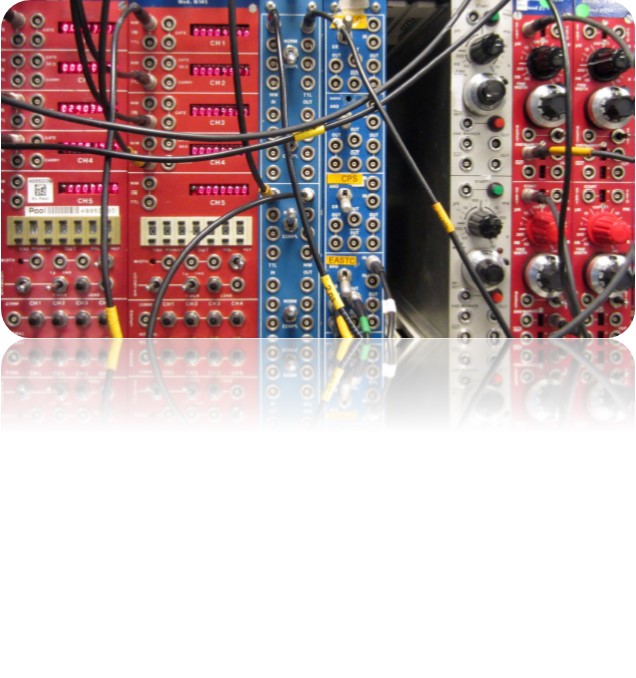Chevelle Defends Thesis

Chevelle Boomershine successfully defended her Ph.D. thesis on October 31, 2025 entitled studied to constrain type Ia nucleosyntheis using the Rhinoceros gas target system. Congratulations Chevelle!!
Sydney Publishes Thesis Data

17F(p,p’)17F* Study of a Key 14O(α,p)17F Resonance
Published: September 2025
Lead Author(s): S. Coil
The 14O(α,p)17F reaction triggers the αp process in X-ray bursts and dramatically impacts the observed light curve. The most important resonance in this reaction was studied via inelastic 17F+p scattering using 17F beams from the TriSol separator. The results were the subject of an Honor thesis by former Notre Dame undergraduate Sydney Coil and were recently published in Physical Review C. Learn more
Publication: Probing the most important 14O(𝛼,𝑝)17F resonance through a study of 17F(𝑝,𝑝′)17F*
Honored to Host Distinguished Visitors

I was honored to recently host two distinguished visits by elected officials. On August 6, 2025, Congressman Rudy Yakym visited the NSL as part of a tour highlighting innovative research occurring at the University of Notre Dame. Rep. Yakym (ND MBA ‘19) was first elected to the House of Representatives in 2022 and represents South Bend in Congress. On September 20, 2025, the NSL hosted the Governor of New Mexico, Michelle Lujan Grisham, who has served as the Governor of New Mexico since 2019. Prior to her election as Governor, she represented New Mexico’s first district in the House of Representatives.
Scott Defends Thesis

Scott Carmichael successfully defended his Ph.D. thesis on April 2, 2025 entitled “An experimentally constrained reaction rate for 57Ni(p,γ)58Cu” advised by Prof. Dan Bardayan. Way to go Scott!!
Cade Publishes Nature Paper

Cade has published a paper on the structure of the neutron-rich isotope 70Co in Springer Nature’s open-access physics journal, Communications Physics. The manuscript, titled “Extreme Shape Coexistence Observed in 70Co”, identifies two nuclear states with significantly differing shapes.
The experiment was performed in the National Superconducting Cyclotron Laboratory at Michigan State University, where Cade received his undergraduate degree before coming to University of Notre Dame to pursue his Ph.D. under the guidance of Prof. Daniel Bardayan.
25,26Mg(α,n)28,29Si Paper Published
Drew published a manuscript on his thesis work!
Total cross section measurements of 25,26Mg(α,n)28,29Si via direct recoil detection, D. Blankstein, D. W. Bardayan, P. D. O’Malley, J. Allen, T. L. Bailey, C. Boomershine, E. Briley, D. P. Burdette, L. K. Callahan, S. Carmichael, A. M. Clark, A. C. Dombos, O. Olivas-Gomez, S. L. Henderson, L. Morales, A. D. Nelson, J. Wilkinson, Phys. Rev. C 110, 045803 (2024).
Bardayan Elected Director of ARUNA
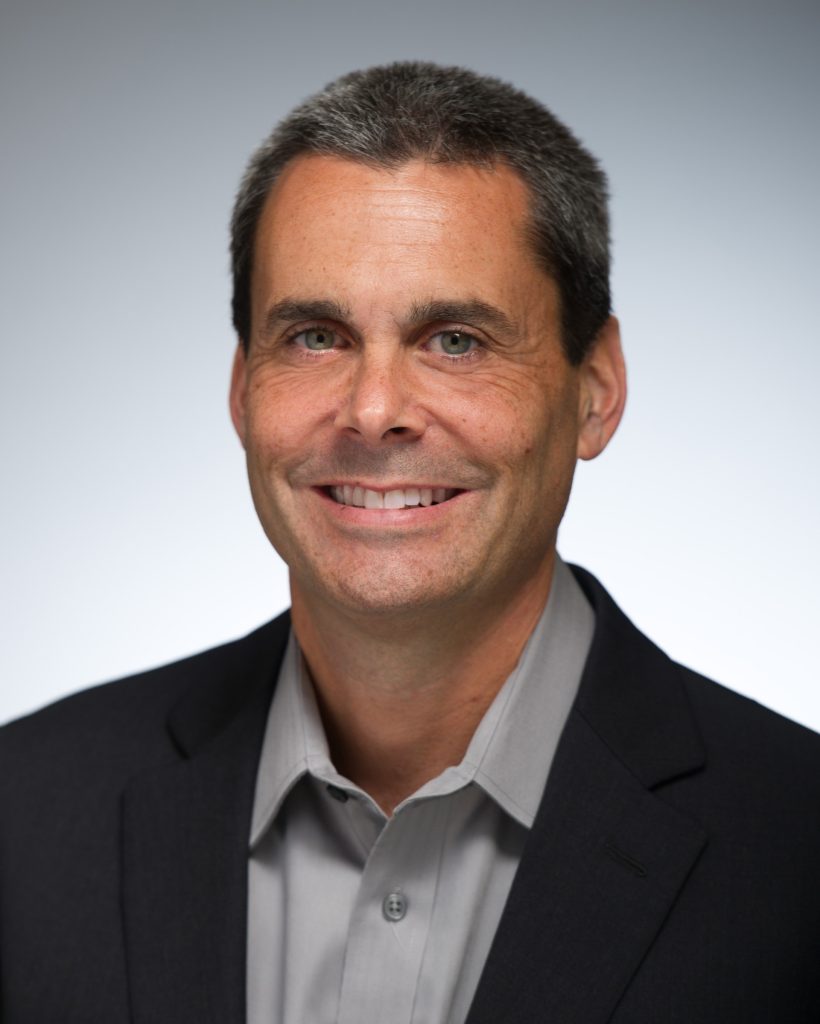
Nuclear Science Laboratory (NSL) Director and Notre Dame Professor of Physics Dan Bardayan was recently elected as the Director of the Association for Research at University Nuclear Accelerators (ARUNA). ARUNA is an association of 13 university-based accelerator laboratories in the United States and the scientists performing nuclear research at them. ARUNA was founded in 2010, with the goals to optimize the use of university-based accelerator facilities, increase the opportunities for education around them, and document their scientific impact as part of the U.S. nuclear science enterprise. ARUNA members believe that the diversity of approaches represented by their laboratories is a critical asset for a field that is presently growing fast around the science opportunities offered by the Facility for Rare Isotope Beams (FRIB).
The NSL is a founding member of ARUNA with a strong tradition in nuclear science research and is a national leader in the education of nuclear scientists. The NSL is the research base for 5-10% of nuclear science PhD students nationwide so it was natural for the NSL to take a turn in hosting ARUNA. ARUNA had been hosted by Florida State University since its founding in 2010.
Cade Wins Inaugural Science Graduate Fellow Award
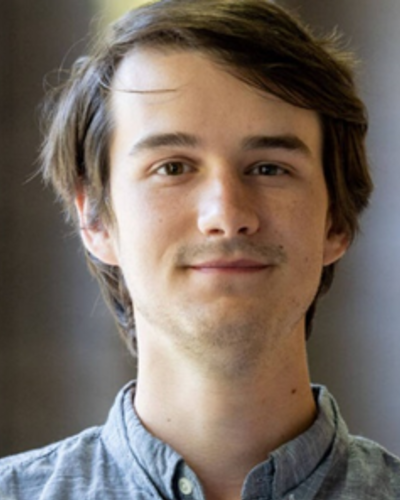
The University of Notre Dame College of Science is pleased to announce that Cade Dembski is a recepient of the inaugural Science Graduate Fellow Awards. This award recognizes outstanding doctoral students in the College of Science who have secured significant external funding for their graduate studies or doctoral research grant.
Congratulations Cade!
Patrick Promoted to Associate Research Professor
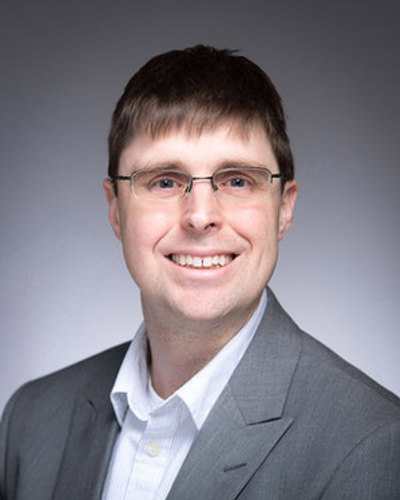
Patrick was promoted in the Spring of 2024 to Associate Research Professor. University guidelines state “The research associate professor should have demonstrated outstanding research ability, growth in knowledge and maturity, salutary influence on colleagues and students, and standing among colleagues.”
Congratulations Patrick!
Sydney Wins 2024 Paul Chagnon Award and is a 2024 Honorable Mention for the NSF Graduate Research Fellowship Award
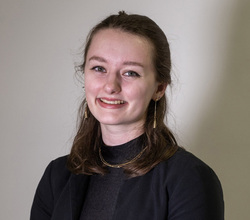
Sydney Coil was recently awarded the 2024 Paul Chagnon Award and was honorable mention for the 2024 NSF Graduate Research Fellowship Award. Congratulations Sydney!!
The Paul Chagnon Award is given to a graduating senior based for demonstrated character and leadership, and for service to the University, the Department, and to his or her fellow physics majors. The award is named in honor of the many contributions of Paul Chagnon during his time as Professor in the Department of Physics until his retirement in 1995. Being selected as the recipient of this award is an indication of how impressed the department has been with her achievements.
Inaugurated in 1952, the NSF Graduate Research Fellowship Program recognizes and supports outstanding students in the NSF-supported STEM (science, technology, engineering and mathematics) disciplines who are pursuing research-based master’s and doctoral degrees at accredited U.S. institutions. It is the oldest graduate fellowship of its kind.
Scott Wins Browne and Departmental Research Awards
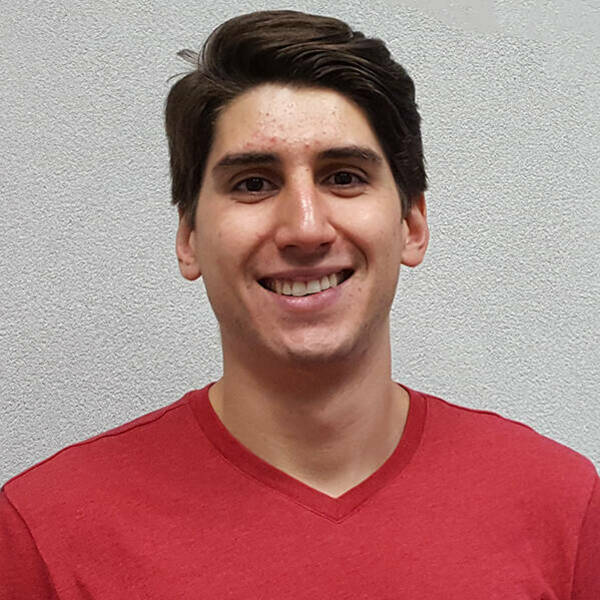
Scott Carmichael recently won the 2024 Nuclear Science Lab Browne Award and the Department of Physics and Astronomy Distinguished Research Award. Congratulations Scott!!
Cornelius P. Browne served as the director for the Nuclear Structure Laboratory for nearly thirty years. Through his hard work and dedication, he steered the lab through the most successful period in its history. In honor of Dr. Browne this award is presented annually to an outstanding Nuclear Physics graduate student who has exemplified his work ethic.
Scott was also awarded the departmental Distinguished Research Award. Carmichael was recognized for extraordinary efforts in commissioning a high-precision magnetic spectrometer at the Nuclear Science Laboratory and its subsequent use to elucidate radioisotope production in supernovae.
Bardayan Interviewed About Recent Discovery at FRIB
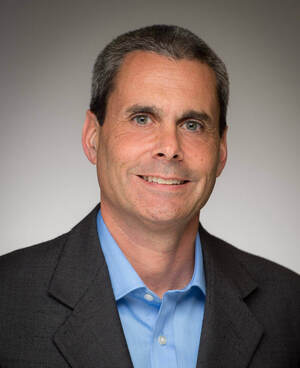
Less than a year after its opening, the Facility for Rare Isotope Beams produced five never-before-seen isotopes for observation, a success that researchers say highlights the discovery potential of the facility. Nuclear Science Laboratory director Dan Bardayan was interviewed for the American Physical Society News of the week about the discovery. He was quoted as saying “One of the fundamental observables of nuclear physics is whether a given nucleus exists or whether it simply falls apart into its constituents”. Read the full article text at https://physics.aps.org/articles/v17/28.
Team Members Present at 2023 Fall Meeting of the Division of Nuclear Physics in Hawaii
Group members Chevelle Boomershine, Will von Seeger, Scott Carmichael, Patrick O’Malley, Cade Dembski, and Sydney Coil travelled to Waikoloa, Hawaii to participate and present their research at the 2023 Fall Meeting of the Division of Nuclear Physics. From the pictures below, it appears there were also opportunities to explore the island.
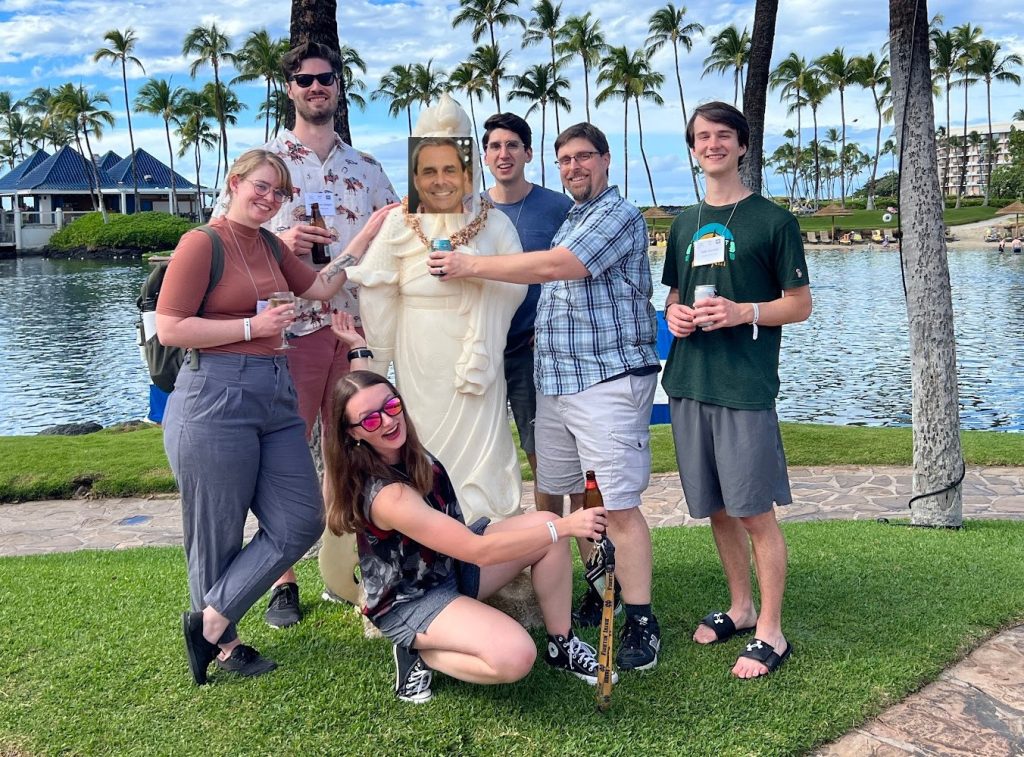
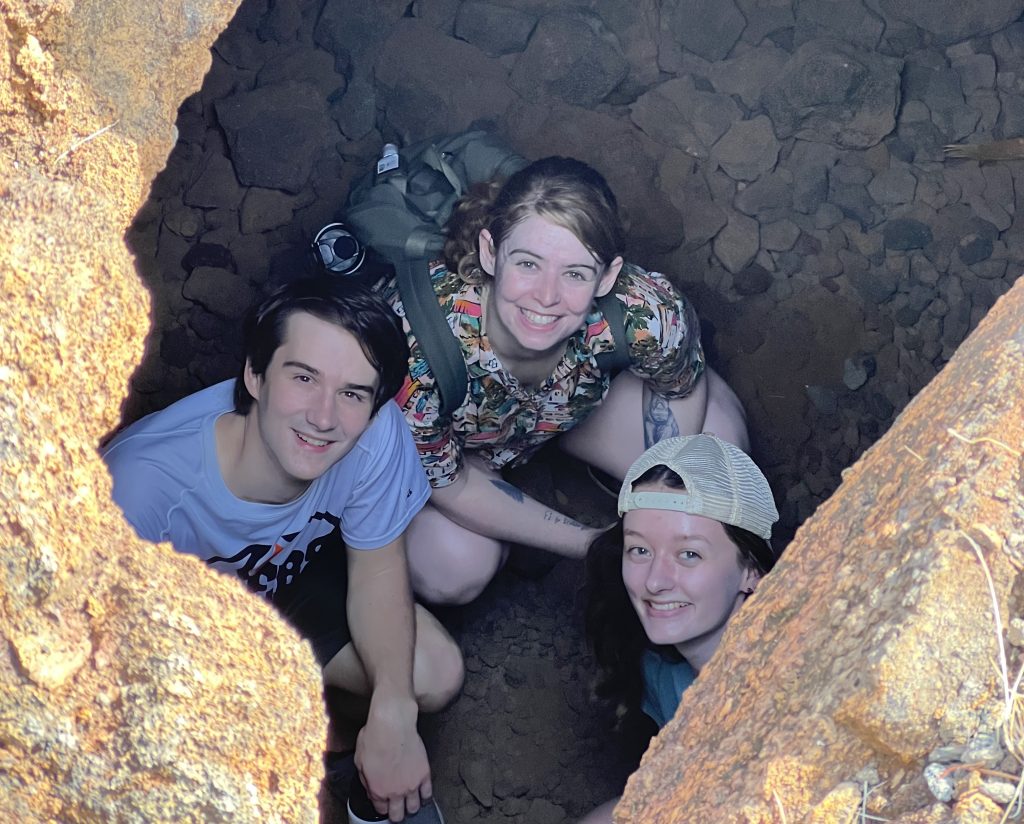
NSL Researchers Featured on Korean Broadcasting Society

NSL scientists Michael Wiescher, James deBoer, Shahina, and Dan Bardayan made presentations at the 17th Conference on Nuclei in the Cosmos, which was held at the Institute for Basic Science in Daejeon, South Korea. The was a particularly opportune time to be in Daejeon as the Rare Isotope Accelerator Complex (RAON) is nearing construction completion. The excitement by the local community to host the conference and scientific facility was demonstrated by the impromptu appearance of a camera crew from the Korean Broadcasting Society. Check the video link at https://www.youtube.com/watch?v=IVaPbRX9FjY&t=517s.
2023 Summer Students Welcomed to the Group
Every summer the size of the group swells with the addition of summer students performing research at the Nuclear Science Lab. From left to right is graduate student Cade Dembski, Faculty member Patrick O’Malley, REU student Alex Temidis, REU student Melody Shimba, undergraduate Sydney Coil, graduate student Will von Seeger, undergraduate Matt Chapple, undergraduate Tom Gore, graduate student Chevelle Boomershine, and Dan Bardayan.
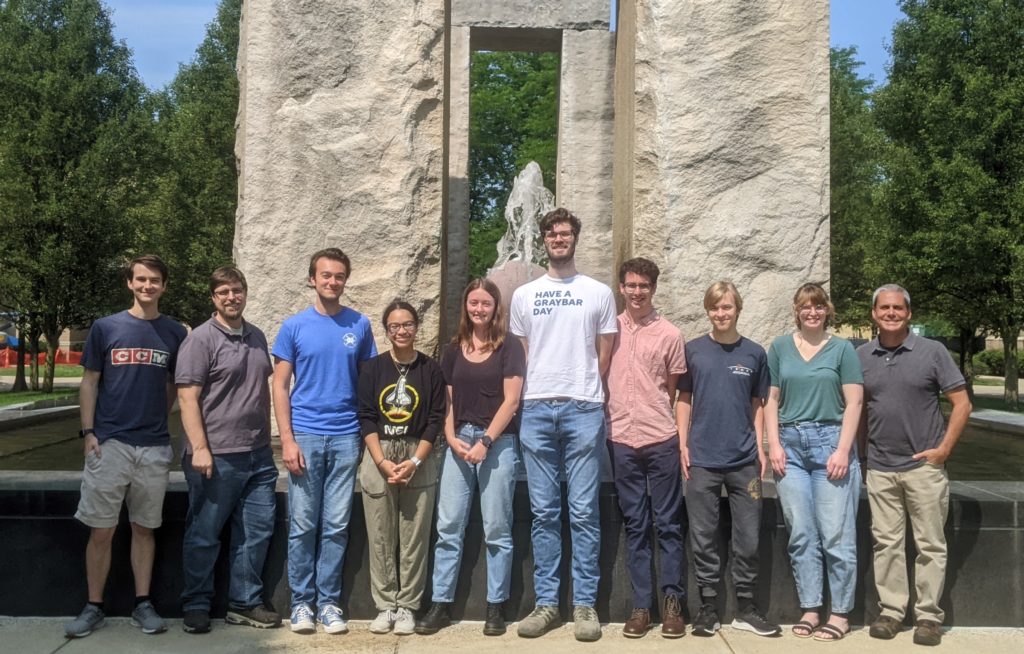
Sydney Awarded Edison Fellowship
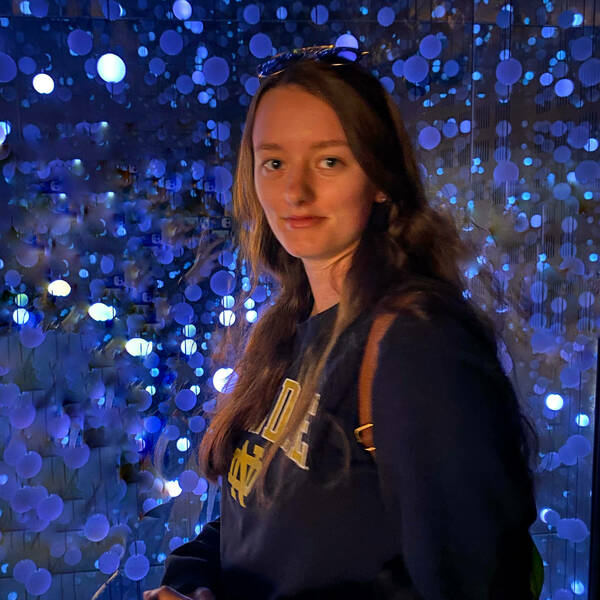
Notre Dame undergraduate Sydney Coil has been awarded a 2023-2024 Charles Edison Fellowship. The Charles Edison Fellowship is a $1,500 fellowship that will be granted to two undergraduate students who are passionate about pursuing research, but have financial struggles. “Research is a vital element to an undergraduate science education. However, this process requires much time and effort, and many students cannot commit time to research due to financial circumstances and must rather have an on-campus job.” says Daniel Pape, co-editor-in-chief of Scientia. “The Edison Fellowship will give these students the opportunity to participate in research and make discoveries in their field of interest.”
Scott Wins Lamm Award
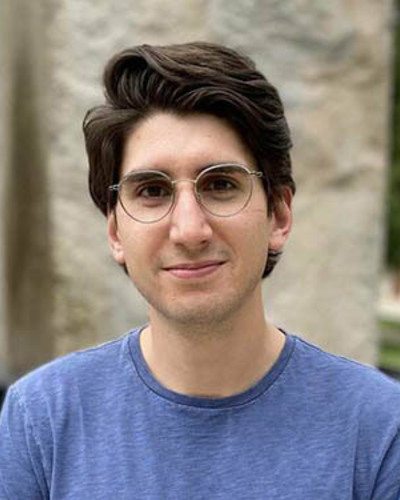
Scott Carmichael is the recipient of the 2023 Larry O. Lamm Memorial Award in Nuclear Physics. Congratulations!
Dr. Lamm was a 1989 Ph.D. graduate from our program and in 1994 joined the nuclear group as a Research Professor. His work in the Nuclear Science Laboratory as technical director was instrumental in expanding the laboratory to its current size, and striving to reach new heights in nuclear astrophysics. The award is given annually to the student that was deemed to have provided the most outstanding service and dedication to the Nuclear Science Laboratory.
First Beam Transported to Enge Spectrograph
A milestone was reached in April 2023 as the first beam was transported to the Enge Spectrograph. A 14 MeV proton beam was tuned to the quartz viewer directly in front of the Enge target chamber with no noticeable loss in transmission. The quadrupole on the Enge beamline focused the beam to a spot roughly 3 mm wide as shown in the pictures below taken with the quadrupole off and on.

Cade Selected as NSF Graduate Research Fellow

Nuclear Science Lab researcher and ND Department of Physics and Astronomy graduate student Cade Dembski has been selected as a 2023 National Science Foundation (NSF) Graduate Research Fellow. Cade’s project is entitled “Measuring Nuclear Fusion Rates to Study Astrophysical Explosions and Nucleosynthesis” and will create a world-unique particle-decay spectrometer at the NSL TriSol facility to study exotic nuclear decays of astrophysical interest, and he is working under the guidance of Prof. Dan Bardayan.
Inaugurated in 1952, the NSF Graduate Research Fellowship Program recognizes and supports outstanding students in the NSF-supported STEM (science, technology, engineering and mathematics) disciplines who are pursuing research-based master’s and doctoral degrees at accredited U.S. institutions. It is the oldest graduate fellowship of its kind.
Enge Spectrometer Energized
After a few years of installation, the magnet coils of the spectrograph were energized for the first time in March of 2023! Congratulations to Scott Carmichael and the team for all of their hard work in reaching this milestone.

ATHENA NIM Paper Published
Drew Blankstein published a manuscript describing the commissioning of the Active Target High Efficiency detector for Nuclear Astrophysics (ATHENA) in Nuclear Instruments and Methods. The full citation is
ATHENA: An active target detector for the measurement of total cross sections
D. Blankstein, D.W. Bardayan, J.M. Allen, C. Boomershine, L.K. Callahan, S. Carmichael, S.L. Henderson, and P.D. O’Malley
Nucl. Instrum. Meth. A, 1047, 167777 (February 2023).
Congratulations Drew!
TriSol Commissioned
TwinSol was recently converted to TriSol with the addition of a switching magnet and superconducting third solenoid. TriSol has now been commissioned by demonstrating the production of 7Be, 8B, 11C, 14O, and 17F beams.

The results have been published as
TriSol: A major upgrade of the TwinSol RNB facility
P.D. O’Malley, T. Ahn, D.W. Bardayan, M. Brodeur, S. Coil, and J.J. Kolata
Nucl. Instrum. Meth. A, 1047, 167784 (February 2023) .
Drew Defends His Thesis
In December 2022, Drew Blankstein successfully defended his thesis entitled “ACTIVE TARGET MEASUREMENT OF THE 25,26Mg(a,n)28,29Si TOTAL CROSS SECTION”. Congratulations Drew!

Bardayan elected Fellow of the APS

Dan Bardayan was selected as a Fellow of the American Physical Society in November of 2022. Bardayan was nominated for his study of explosive astrophysical events with exotic beam measurements, and the development of unique experimental devices to perform such studies. He performs his experiments using transfer reactions at the TriSol magnetic spectrometer at the Notre Dame Nuclear Science Laboratory, the supersonic gas-jet target JENSA at Michigan State University, and the Gammasphere array at Argonne National Laboratory.
No more than one-half of one percent of the APS membership are elected to the status of fellow each year. The fellowship program was created in 1921 for scientists in the physics community to recognize their peers’ contributions to the field with original research, innovative applications, teaching and leadership. This year, 155 members were honored as fellows.
Chevelle and Scott present at INPC
Chevelle and Scott were part of a large Notre Dame contingent to present at the 28th International Nuclear Physics Conference held in September 2022 in Cape Town, South Africa.
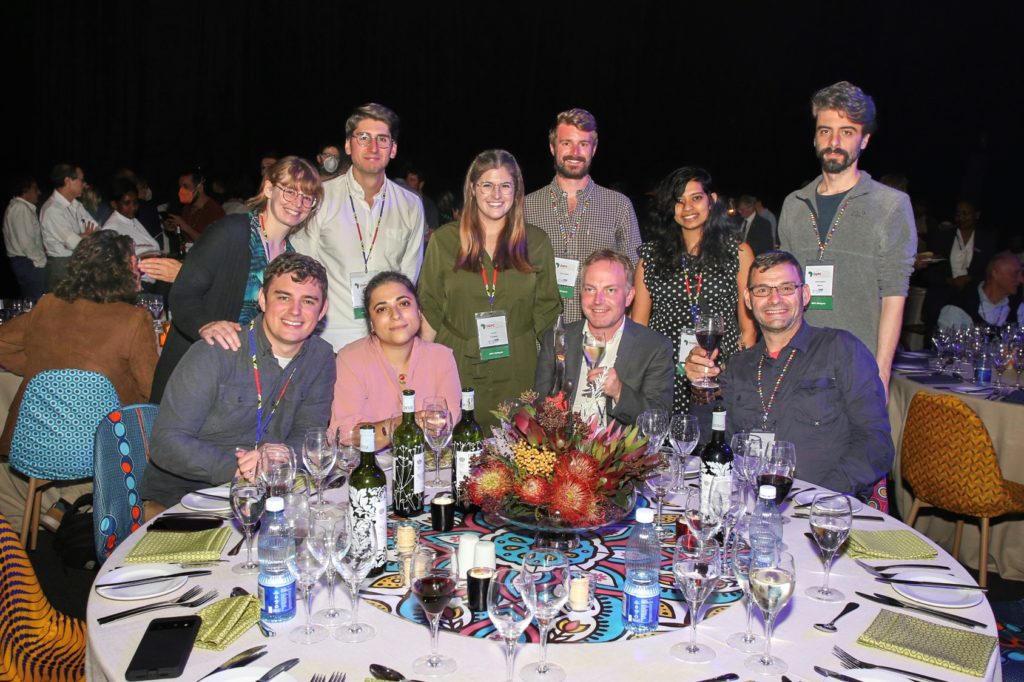

It was rumored that Chevelle even got her picture with a Rhinoceros in honor of having taken her thesis data with the Rhino gas target at the NSL.
